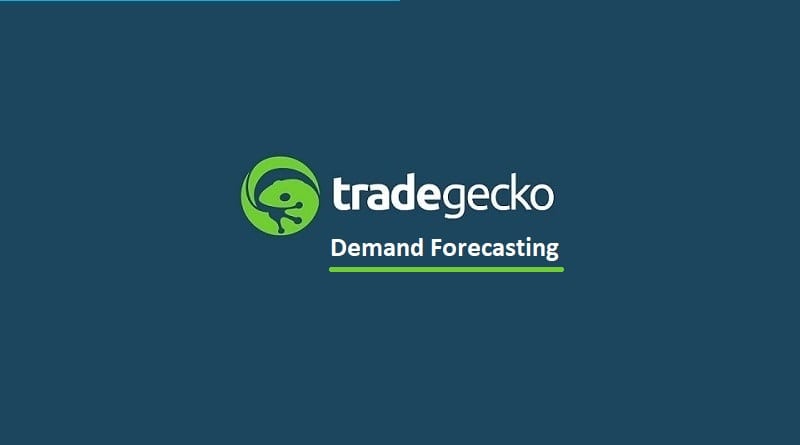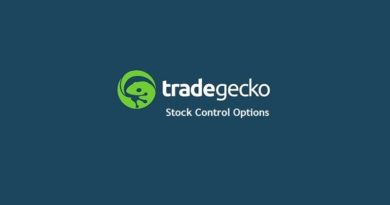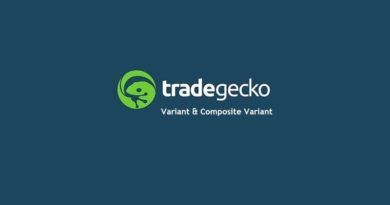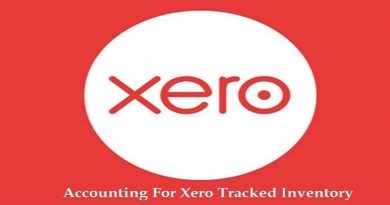TradeGecko Releases Demand Forecasting for Inventory
Imagine a scenario where you’re pounded by orders upon orders during a busy season. Your team is working overtime to fulfill them. Working tirelessly to make sure no order gets delayed. The last thing you’d need during this make-or-break period is your arsenal running dry which may happen if you haven’t already invested in inventory software.
Managing everything manually is understandably quite difficult. For example, in addition to the number of orders and client requirements, you may need to take care of the employees and their day-to-day tasks as a manager so that there is no mismanagement on your part and you can keep track of all the employees’ performance at the EOD. This can be easily accomplished when you prepare a to-do list for them on a daily basis and keep an eye on how much work is done by whom. That way, you can assess how much of the company’s workload is carried by your employees. It may also contribute to increased customer satisfaction on a broader level.
An unhappy customer is certainly not a good marketing move but you have no other choice to return them empty-handed. This not only means a profit forgone but in the long term, may also result in the loss of a business as there’s a fair chance of that customer now seeking another avenue and approaching your competitor.
So what went wrong?
Of course, your team worked hard, no doubt about that!
Actually, it’s not your team but your planning. The real problem lies in analyzing the span of the oncoming demand. You were not able to forecast your product demand which resulted in a grave loss.
I hope this is just hypothetical for now but imagine if it were true. If indeed this has happened to you then you obviously need a good inventory management software with a decent demand forecasting system embedded in it. Of course, it is vital that your business already has an understand of What Is Demand Forecasting in Retail: A Guide for Growing Businesses so that they can manange situations such as these with ease.
Keeping this requirement in view, TradeGecko, a cloud-based award-winning inventory management software has released a demand forecasting feature to manage your inventory needs in an automated manner.
Believe me, having worked in this field for almost a decade now, not many inventory management software come with this feature. Especially those designed for the Small-and-Medium sized enterprises.
Inventory management is critical to the health of a business because it ensures that there is rarely too much or too little stock on hand, reducing the risk of stockouts and inaccurate records. This knowledge can assist your company in keeping its doors open, customers satisfied, and revenue high. That is why businesses tend to use ERP systems with inventory management modules that can help ensure you never have another inventory incident or struggle with a lack of accountability in your warehouse. In fact, Using Epicor as your ERP (an industry-specific software) can help you manage accounting and finance, human resources, customers, the supply chain, inventory, distribution, and manufacturing production.
Also Read: How to integrate TradeGecko with Xero
What does TradeGecko’s Demand Forecasting Feature do?
As the name suggests, based on the consumption pattern of your inventory (through sales figures), it predicts the demand of your inventory items and allows you to create purchase orders to raise the orders to your suppliers. TradeGecko also displays the date by which you’d need the inventory to arrive in your stock to avoid any hiccups.
How does TradeGecko’s Demand Forecasting Work?
If you’re keen to look under the hood then here are the details for you.
TradeGecko forecasts the inventory demand based on the following parameters:
- Stock Cover Period: The quantity of stock of each [link]variant[/link] that you prefer to have in hand.
- Lead Time: The number of days between when an order is placed and the supplier delivers the order.
- Safety Stock: The minimum quantity of an item you prefer to have in stock. Regardless of sales.
However, a point to note is that even with the above parameters, TradeGecko may not be able to make a forecast as it needs sufficient data to extrapolate from there. The sufficient data means 14 days, 8 weeks or 2 months worth of data for aggregation.
Moreover, to analyze the data over the long-term, TradeGecko goes as back as 2-years in the past to analyze the trend in demands.
So, for the first time it takes some time to prepare the forecast and after that, TradeGecko forecasts on complete autopilot on weekly basis. However, you can also re-calculate your forecasts anytime you want (read below).
Also Read: How to manage inventory with TradeGecko Stock Control Options
Smooth Moving Average for Intermittent Demand
In addition to the above parameters, TradeGecko bases its demand forecasting model on the
Smooth Moving Average.
The outliers are smoothed out leaving behind the prevailing trend.
What is Moving Average?
Moving Average (a.k.a rolling average or running average) creates a series of averages by adding an additional element and removing the earliest one.
Understood?
No!
No problem. Here’s a detailed article for your perusal.
Understanding How Smooth Moving Average Works in TradeGecko
To understand how the SMA model forecasts the demand, You can find a good deal of information on the TradeGecko’s website explained with the help of 3 different scenarios.
I won’t delve into the details here because I don’t want to make this article ponderous by regurgitating some statistical concepts.
How to Use the Forecast Feature in TradeGecko?
You can see the Forecast Table by clicking the Forecasting link in the Intelligence tab on the menu bar. The Forecasting table has different columns which mean the following:
1. Stock out date – Based on the available inventory you have and the forecasted daily sales, this column shows you when you will run out of stock.
2. Order by date – This is the last date you should place your purchase order. We calculate this based on your lead times.
3. Reorder quantity – This is the quantity you should reorder. Reorder quantity does not include incoming stock at the moment and this feature is under-development.
4. Available – The amount of available stock you have. This is calculated by subtracting committed from your Stock on Hand.
5. Added to draft – This column refers to the total quantity on draft purchase orders that have been created through demand forecasting only. This does not include all draft purchase orders in TradeGecko.
6. Forecasted – This is the forecasted sales from the moving average model.
7. Supplier – This is the supplier of the product. As of the moment, TradeGecko only supports one supplier per product and automatically populates this value.
Demand Forecasting Settings
You can also change the default settings of demand forecast such as the Stock Cover, Lead Time and Safety Stock from the Intelligence ? Settings tab.

Moreover, you can apply changes at the variant level as well. This will override the defaults on the forecasting settings tab.

You can also set these values in bulk via CSV by going to Settings > Location. From there, select the warehouse and fill in the default values on the downloaded CSV. Import the updated CSV and you’ll have the default lead time, stock cover and safety stock on your variants at a location level.

Create Purchase Order Based on Forecasted Demand
Creating a purchase order based on forecasted demand is simple. When on the forecasted table, just click the Add button.
If there is already a draft purchase order for the same Supplier at that Location then the variant will simply be added to that draft purchase order. If there is no existing draft purchase order for that Supplier and Location, then a new draft purchase order will be created.
You can check all your purchase orders from the Purchase Order tab on the Forecast Table.

Final Words
So that’s how you can generate a
Before, singing off, I believe it’s better to understand some limitations that currently this Demand Forecast feature comes with. Hopefully, these will be taken care of gradually in the future.
- This feature currently does not support bulk workflows.
- The sales quantity for composite products
are not added to the sales quantities of the individual SKUs. - Also, forecast models for the following are currently not supported.
- Seasonality
- New products
- Spikes in demand
- Lost demand due to products going out of stock






Pingback: TradeGecko B2B eCommerce Module - Launch your Online Store - The Usual Stuff